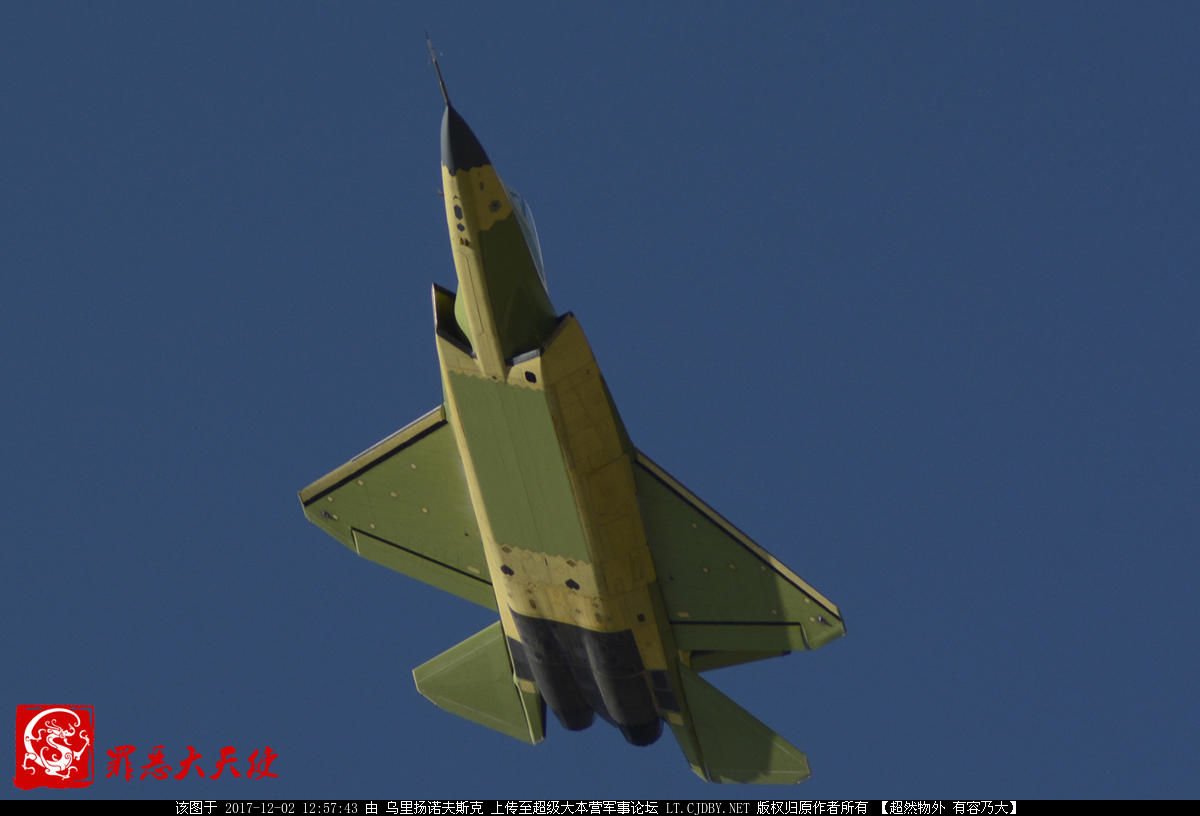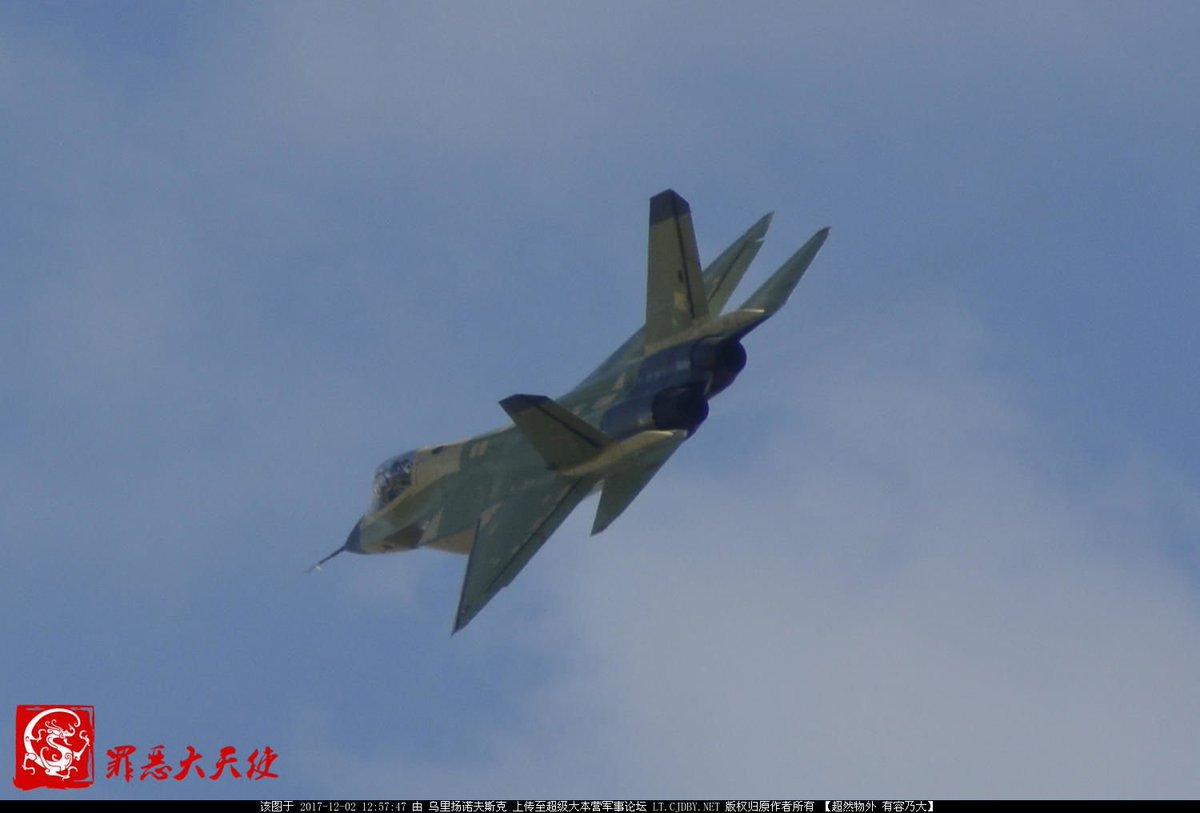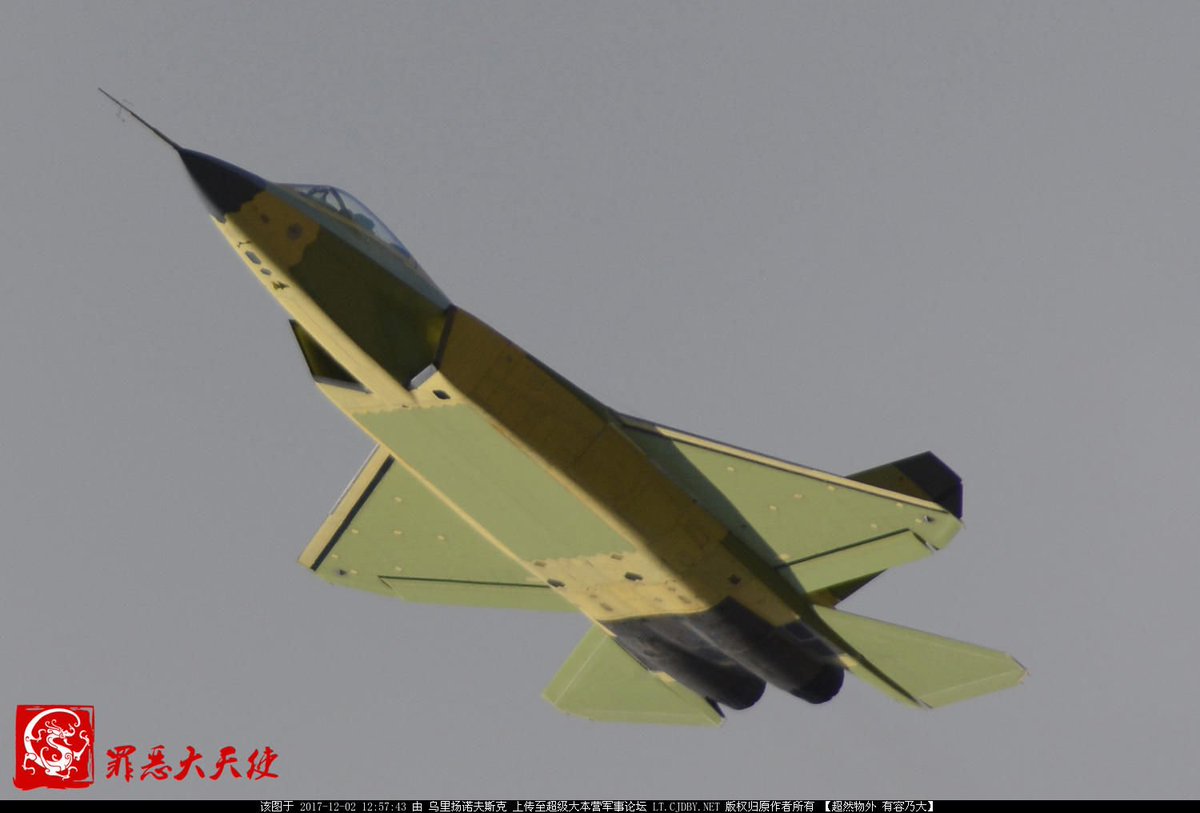Do we know for a fact that they on using WS-13 on 2.0?
You are using an out of date browser. It may not display this or other websites correctly.
You should upgrade or use an alternative browser.
You should upgrade or use an alternative browser.
Shenyang FC-31 / J-31 Fighter Demonstrator
- Thread starter RedSky
- Start date
- Status
- Not open for further replies.
Do we know for a fact that they on using WS-13 on 2.0?
NO, as far as I know these are all rumours.
That my friend is a beautiful airplane, as sweet as the SU-57?? Yes it is, I've got 50 Gs for a down payment Shenyang! in fact I'll fly my summer "airshow routine" in the primer bird,, or I've already spoken for the J-31 proof of concept "murdered out" "Black Bird!
Just load it on an IL-76 and deliver it to Scott AFB, Central Obamastan,, I'd like to have it there on the Tarmac, reassembled and topped up with fluids and fuel Mar 1st... tell em to put it on the Air Force Brat's tab,,, of and tell AVIC, the check is in the mail! oh, and I'll be needing about 3 spare RD-93's for the summer season, I'm gonna wring that bird out!
oh, and strip that ugly green "tractor paint" off the wheels, I want those babies Polished! I can't be seen flying around without a little "bling, bling!"
NO, as far as I know these are all rumours.
I'm rather certain they are still flying the RD-93s and they will continue to fly them for the foreseeable future, when we get an order or some official interest with the funding behind them, then they will make the necessary changes to adapt the airframe to the WS-13s.
but this bird will give "Made in China!" a whole new meaning, its a very clean simple airframe, innovative in construction, and that may eventually help them bring down production costs after the manufacturing processes are ironed out!
remember this thing flew very well at Zuhai!, as the "murdered out", little "Black Bird", it WAS a hit,, somewhat overshadowed now by the two J-20's last year,,,,,but still a very fine aircraft, and very desireable. I have NO doubt the Pakistani's are interested, and China will likely give them a production package at some point,,, this is a very fine airplane!
Jura The idiot
General
more of it:





found in Twitter:
and
The surface of the parts in the photo is 3d printed then milled. While I believe what they say, I am not sure why they are saying you can't CNC the same part. Maybe in other situations, but not the one they've shown. In other words the 3d printers will be additional investment and the parts still requires some existing machines to finish. Since they already have the traditional equipments, a 3d printing based production process contains hidden infrastructure investment.
The issue with a single process of 3d printing is still speed. Unlike in a civilian project you can't go fast because the density and consistency requirement. Yes if you have 100s printers in a large factory working on printing simultaneously it will amazing, that means 3d printing must be mainstream, not nice-to-have, to justify the additional large investment.
I suppose they could've just made a smaller investment for a small number of printers to complete the prototypes and verify the whole procedure in the process. The fact is FC-31 can't be made without 3d printed parts. It leads to the conclusion that without a major fund injection the current prototypes will be slow to make.
Firstly, CNC is only one tool in the whole traditional production method. We should not limit the discussion to CNC only. Secondly, 3d printing method is not against some traditional tools in the whole process, polishing for example.
What traditional method can not do is a structure like this |_\_/_|.
For traditional casting method to do it would need to break the mold. To break every mold for making everyone final product would be astronomically expensive. Without casting a bulk in a rough shape, you can not forge, and so on.
The only way for traditional method is to cast separate pieces, forge them, mill them, then weld them together, then mill the welding joints again. That is very time consuming and costly.
With 3d printing, you do only two steps. First, print one final piece in what ever shape, then polish the surface if necessary.
Besides 3d printing can make complicated shapes that traditional method can not do without huge cost and time, even something traditional method seemingly should be good at is better to be done by 3d printing.
For example, welding is very difficult to do to titanium alloy. F-22's bulkhead were cast/forged into three pieces then welded together. While forging is known to guarantee strength, welding does not. This creates two weak lines in the bulkhead. While F-31's bulkhead is printed in one piece. So long as the 3d printing method is reliable, there is no weak points or lines.
You're mistaken, Brat. Concord doesn't have canards so cannot deploy flaps for landing. J-20 has and uses them to balance its landing flaps., then dial up Concord, the nose section must be hinged in order for the flight crew to even see the runway on approach, that nose is pitched "WAY UP THERE!" in order to make enough lift to slow to a safe approach speed.
Perhaps, but a much more significant goal for the JF-17 program was to develop Pakistan's nascent aeronautical industry, the possibility of which hinged upon successful exports. China's refusal to induct the aircraft, despite earlier promises, and the generally-poor export record of the JF-17 failed to meet that goal.
Except Pakistan has a domestic requirement of 190 JF-17 fighter jets, so whether or not they have successful with exports is completely irrelevant since Pakistan will be producing JF-17 fighters for at least another 8 years (25 per year) just to meet it's own domestic demand.
Do you think 190 JF-17 fighters for Pakistan is a small order? It's more than enough to develop Pakistan's nascent aeronautical industry, whether they build another 100 more or 200 more for export is icing on the cake.
190 JF-17 for domestic use in Pakistan is MORE than enough to develop Pakistan's nascent industry, it has nothing to do with exports or whether China inducts it or not.
Recall that the JF-17 program was 60% funded by Pakistani money and that SAC is also calling for R&D investment for its FC-31 program. If the Chinese essentially turned their backs on PAC Kamra after the latter had put down a good portion of its investment, why would they not feel any suspicion this time around?
There has been no call for Pakistan to become a joint-venture partner in the FC-31 program, and FC-31 has already progressed to near completion, it is way too late for Pakistan to join as a joint-venture partner.
It is too late for Pakistan to join as a R&D partner for FC-31. Shenyang has never asked Pakistan to pitch in money, so you are imagining stuff.
The lack of a FC-31 export license could mean a few things:
(1) It is not going to be a worthwhile export that warrants potentially revealing key technologies to potential US allies.
(2) A few subsystems are reliant on foreign parts (hint: engines).
(3) The PLAAF/PLANAF is still in the process of evaluating the design.
(4) Further revisions are to be expected (unlikely this)
The reasons for the TF-X and FC-31 not being granted licenses are very, very different.
The lack of a TF-X export license can mean a few things:
(1) It is not going to be a worthwhile export that warrants potentially revealing key technologies to potential Chinese allies.
(2) A few subsystems are reliant on foreign parts (hint: engines, avionics, everything).
(3) The Turkish airforce is still in the process of evaluating the design.
(4) Further revisions are to be expected (unlikely this)
The reasons for TF-X and FC-31 not being granted license are similar, with TF-X being a far worse stage and less likely chance for exports since it's doesn't even have a viable technology demonstrator or prototype ready.
Firstly, CNC is only one tool in the whole traditional production method. We should not limit the discussion to CNC only. Secondly, 3d printing method is not against some traditional tools in the whole process, polishing for example.
What traditional method can not do is a structure like this |_\_/_|.
For traditional casting method to do it would need to break the mold. To break every mold for making everyone final product would be astronomically expensive. Without casting a bulk in a rough shape, you can not forge, and so on.
The only way for traditional method is to cast separate pieces, forge them, mill them, then weld them together, then mill the welding joints again. That is very time consuming and costly.
With 3d printing, you do only two steps. First, print one final piece in what ever shape, then polish the surface if necessary.
Besides 3d printing can make complicated shapes that traditional method can not do without huge cost and time, even something traditional method seemingly should be good at is better to be done by 3d printing.
For example, welding is very difficult to do to titanium alloy. F-22's bulkhead were cast/forged into three pieces then welded together. While forging is known to guarantee strength, welding does not. This creates two weak lines in the bulkhead. While F-31's bulkhead is printed in one piece. So long as the 3d printing method is reliable, there is no weak points or lines.
Naw, Naw! come on now! lets not make 3D printing something its not, and lets NOT throw out traditional castings and forgings,,, the printed 3D part still needs "milling", or machining to finish the part and then a final polish to bring that part to specs.
and to be very honest the 3D printing process is basically computer generated "welding" of molten material together through the "printing" process.. while titanium is indeed difficult to weld, its is a process that has been very well mastered,,,, when you're looking at a Lynskey Litespeed,, you want to see welds that look like a "stack of dimes", a "good" titanium weld is stronger than the parent materials, and once those welds are machined smooth, you do indeed have a large one piece structure!
while 3D printing does offer some significant advantages, possibly even more efficiencies and the economy of scale,,, its still not the "Fairy Godmothers Magic Wand!"
Last edited:
You're mistaken, Brat. Concord doesn't have canards so cannot deploy flaps for landing. J-20 has and uses them to balance its landing flaps.
Actually Frank the Concord's eleven's are actually "flaperons" and they do indeed droop for approaches and departures increasing the wings camber,, and yes they still function differentially for roll, and together droop less or more to either increase or decrease pitch......
You will also notice the Concord's delta wings center of lift is further forward than the J-20's and that the Concord's aft fuselage protrudes some distance aft of the main wing, (Concorde is almost a mid-wing delta), and that aft fuselage contains a fuel tank that "trims" the aircraft according to airspeed and power setttings,,, eliminating the need for canards for additional pitch authority, J-20 on the other hand is a fighter, and of necessity canards are indeed its "primary" pitch control, as the J-20's mission requires rapid pitch transitions, whereas the Concord's pitch transitions are rather more managed through fuel and depend on altitude and thrust.
- Status
- Not open for further replies.
